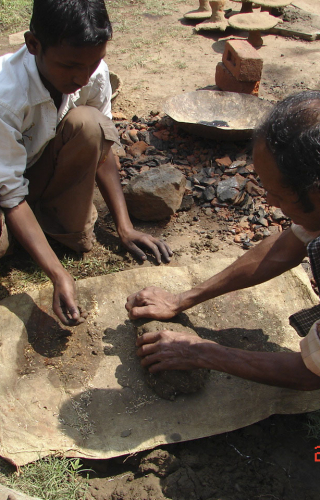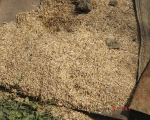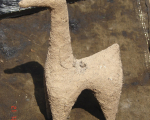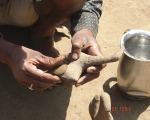Tribal metal-work is prepared using the lost-wax method. This is an elaborate procedure of metal-casting involving several steps and raw materials. A wax model of the desired figurine or statue is made and covered with clay. The clay hardens to create a thick shell. Molten brass is poured on this clay-covered wax model. This melts the wax, which escapes from holes made in the clay covering. The clay is then broken and a metal figurine emerges. The artist then chisels the finer details on the figurine. For making hollow objects, an additional step is the process of creating a clay core which is placed inside the wax model. As the metal melts the wax, the clay core remains intact. This can later be extracted to create a hollow inside.

















